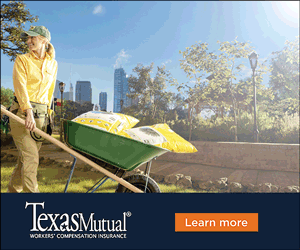Industry Insights
November 22, 2023
Kamin: COVID Presumptions Expire Jan 1, 2024
- State: California
- - 0 shares
California’s COVID-19 presumptions will expire on Jan. 1, 2024, which means employer-related outbreak reporting and shortened decision time frames are going the way of the dinosaur.

John P. Kamin
The last sentence of Labor Code Sections 3212.86, 3212.87 and 3212.88 says that they expire on Jan. 1, 2024, and lawmakers did not pass any new legislation this year to extend them.
This means that the active presumptions, which we currently refer to as the “first responder presumption” and the “outbreak presumption,” will no longer apply to COVID claims.
Below, we will go over the changes to burden of proof, employer reporting, COVID testing and other topics.
Burden of proof
Understanding presumptions requires a strong understanding of the burden of proof:
- With a presumption of compensability, the injury is presumed to be industrial and it’s the defendant’s burden to rebut the presumption.
- Without a presumption, the burden is on the injured worker to prove by a preponderance of the evidence (think more than 50%) that his work put him at greater risk of contracting COVID-19 than his nonindustrial life.
Before the expiration of the statutes, if a presumption does not apply, the burden of proof falls on the injured worker to prove that her work put her at greater risk of contracting COVID-19.
Going forward, all COVID cases will now return to the applicant having to prove up his case.
Decision time frames
Another key element of the presumptions was the shortened decision time frames, as the first responder presumption had a decision date of 30 days and the outbreak presumption had a 45-day decision time frame. The expiration of the presumptions means that these types of claims will revert to a 90-day decision time frame, which should relax the burden on claims adjusters who were previously trying to investigate and make the appropriate decision within these shorter decision deadlines.
Employer reporting
The expiration of the statutes ends mandatory employer reporting of all positive COVID tests to administrators and/or carriers. Before the expiration of the statute, employers could face severe penalties if they fail to do this, pursuant to Labor Code 3212.88, which we refer to as the “outbreak presumption.”
Now that the presumptions are expiring, mandatory reporting will no longer be necessary.
However, employers should still report any cases to their administrators where their employees have informed them that they believe they got COVID-19 via work. After all, whether it’s a knee injury or a COVID-19 infection, allegations of work-related injuries still must be immediately reported to claims adjusters so they can respond appropriately.
COVID testing
Many of you may recall that the COVID-19 presumptions required a positive test that can detect the viral RNA of the coronavirus and that the test must be FDA-approved. We interpreted that as a mandate for a PCR test, because PCR tests actually detect the viral RNA of the virus, whereas antigen (aka rapid or at-home) tests simply detect proteins created by the virus.
Because of the difference between the two tests, antigen tests have been proven to have a far lower accuracy rate and tend to produce more false negatives.
This meant that if one did not have a PCR test, then one did not meet the statutory criteria under the first responder or outbreak presumptions.
All of this begs the question: What type of test will be required by a judge when evaluating whether an applicant satisfied the burden of proof?
To be clear, PCR tests are the gold standard, and those test results usually feature the applicant’s name, date and other identifying information. Conversely, antigen tests are usually just photographed by users without any identifying information in the background.
This means that one could have someone else test positive, take a picture of it and then pretend that it was his. Who would ever know?
As such, if a party does rely on a rapid test in the future, it should absolutely have identifiable information in the photograph of the positive test, such as the name, date, time and a witness to authenticate that the worker did indeed take that exact test.
Alternatively, circumstantial evidence could also be useful. For instance, if the applicant saw medical doctor who diagnosed COVID-19, that could also help corroborate an otherwise questionable antigen test.
Defendants should be wary of sketchy photos of an old rapid test, as that does not appear to meet the standard to satisfy the burden of proof that the worker actually had COVID-19. After all, COVID does have numerous overlapping symptoms that are also found in the flu, colds, gastrointestinal bugs and other viruses and bacterial infections. Just because someone thought she had COVID doesn’t actually mean she did indeed have it.
Conclusion
As we head into 2024, it will be a bit of a bumpy ride for those who have year-end outbreaks fueled by holiday get-togethers, and for those of us who are adjusting to the post-presumption world. That being said, employers and adjusters will likely be happy to relax on hurried outbreak analyses to meet shortened decision time frames.
John P. Kamin is a workers’ compensation defense attorney and equity partner at Bradford & Barthel’s Woodland Hills location. He is WorkCompCentral's former legal editor. This entry from Bradford & Barthel's blog appears with permission.
Advertisements
Columns
- Barthel: Are You an Employer, or Do You Use Independent Contractors? Can You Prove It? 12/24/25
- Barthel: Is Pot a Defense? Are You High? 12/22/25
- Barthel: Is Dubon II on the Way Out? 12/17/25
- Montgomery: San Fran City Official Stole $627k From Workers' Comp Division 12/10/25
- Kamin: Ring the Bells for Settlement Season 12/08/25
- Paduda: Does Comp Care About Workers? 12/05/25
- Sandoval: Throwing Subrogation Under the Bus 12/03/25
- Johnson: Some Thoughts on Apportionment - And SIBTF 11/20/25
- Montgomery: State's First Responders May File Comp Claims for Trauma 11/14/25
- Snyder: Use This New Survey to Negotiate Better 11/12/25
- Holden: Workers' Compensation Act Withstands Another Constitutional Attack 11/11/25
- Gelman: Sherrill's Win Locks in Worker Protections 11/10/25
- Kamin: Newsom Promises SIBTF Reforms in 2026 11/07/25
- Kamin: Comp Costs Hit Highest Combined Ratio Since 2001, WCIRB Says 11/05/25
- Montgomery: DIR to Blow $1.25M on Another Questionable Comp Study 11/03/25
- Wroten: California Sets the Standard as New Study Links Workplace Injuries to Heat Exposure 10/29/25
- Kamin: En Banc Clarifies Policy Reporting Requirements 10/27/25
- Gelman: PTSD-Stricken Officer's Disability Claim Denied 10/22/25
- Snyder: TAG a Structured Settlement Broker 10/17/25
- Snyder: New Medi-Cal Rules Can Affect Your Settlement 10/15/25
Now Trending
- Workers' Compensation News
-
Calif. Jury
Acquits Neurosurgeon on Conspiracy…
Posted on Dec 22, 2025
-
Calif. Former CHP
Officer Gets 270 Days for Fraud,
$360,620 Restitution…
Posted on Dec 19, 2025
-
Calif. State Fund
Only Carrier Providing Benefits
Through Prepaid…
Posted on Dec 19, 2025
-
Calif. DWC
Launches Online System for Public
Records…
Posted on Dec 19, 2025Kimberley J Pryor says: “Injured worker advocates must be very careful when uploading medical records to…”
-
Calif. AI Sessions
on Agenda for DWC Educational…
Posted on Dec 23, 2025
-
Calif. Nicholas
Roxborough Elected CHSWC…
Posted on Dec 22, 2025
-
Ariz. Delay in
Worker's Report of Injury Doesn't
Defeat…
Posted on Dec 18, 2025
-
Ntl. WCRI Webinar
to Cover Impact of Psychosocial
Factors on…
Posted on Dec 18, 2025
-
Fla. OIR Holding
Insurance Summit April…
Posted on Dec 18, 2025
-
Texas Audit
Identifies Opportunities to Improve
Prescribing…
Posted on Dec 24, 2025
Jobs
- In-house REMOTE Workers' Compensation Litigation Attorney
- Defense Attorneys - Remote Work Available
- Trial Attorney - Workers Compensation Staff Counsel
- Defense WC Attorney Wanted- We will beat any offer for the right candidate. Low billables, real bonuses and fast track equity partnership
- JC-495846 Workers’ Compensation Judge
- Workers' Compensation Examiner
- Defense Attorney Workers' Compensation Jobs
Upcoming Events
Jan 15, 2026
Webinar: Psychosocial Factors
Discover how psychosocial factors impact recovery outcomes in injured workers during WCRI’s 30-min …
Mar 3-4, 2026
Save The Date! WCRI’s 2026 Ann
Registration will open up in the coming months. We'll see you there! - Leading national workers' …
Mar 5-6, 2026
DWC’s 33rd Annual Educational
Register Now! 2026 conference topics: DWC Update AI with a Claims Focus Medical and Legal Ethics …
Social Media Links
c/o Business Insurance Holdings, Inc.
Greenwich, CT 06836




No Comments
Log in to post a comment